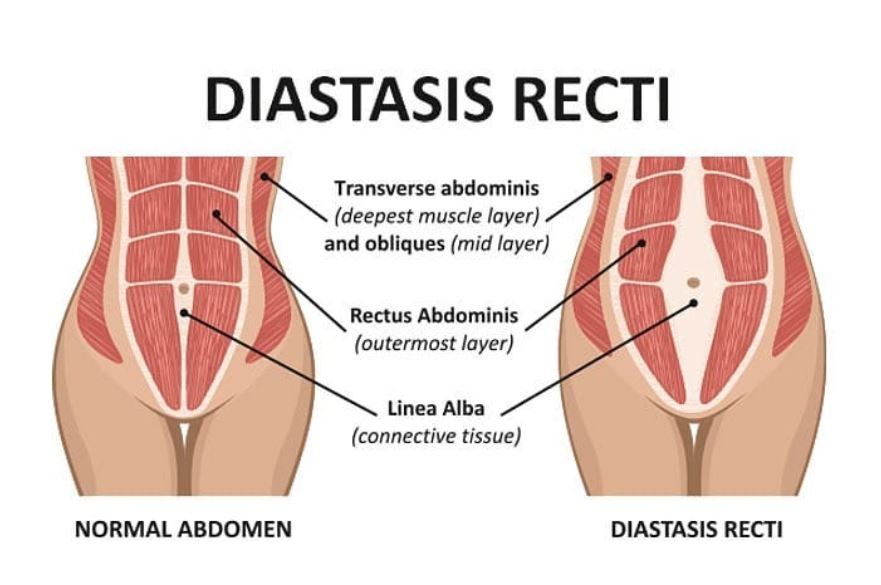From our doctor,
gina mantor, M.D.
By Gina Mantor
•
25 Jan, 2024
In the News Recent case reports have raised the possibility that semaglutide—a glucagon-like peptide 1 (GLP-1) receptor agonist— could be tied to a higher risk of suicidal ideation . But a retrospective study that included about 241 000 patients with overweight or obesity as well as about 1.6 million patients with type 2 diabetes did not confirm that link. Instead, researchers found the opposite. People taking semaglutide had a lower risk of both first-time and recurrent suicidal ideation compared with those taking non–GLP-1 receptor agonists to manage obesity, such as phentermine, as well as those used to manage type 2 diabetes, such as metformin. Because it was retrospective, the current study could not establish a causal link between semaglutide and the lower risk of suicidal ideation, the researchers—including Nora Volkow, MD, the director of the US National Institute on Drug Abuse at the National Institutes of Health—wrote in Nature Medicine. They also noted the need for additional controlled trials to better understand the relationship.

By Gina Mantor
•
14 Jan, 2024
Say Goodbye to Urinary Incontinence and Reclaim Your Freedom with Emsella Treatment!
Are you someone who plans your activities around accessible restrooms? Do you avoid exercise for fear of urinary leakage? Don't suffer silently anymore. Emsella, also known as "The Kegel Throne," is a revolutionary treatment that can help you reclaim your freedom.
Sitting fully clothed in a treatment chair for less than 30 minutes, Emsella strengthens your pelvic floor and improves your intimate health. This therapy is now available at a discounted price of just $494 for six 30-minute treatment sessions, previously
valued at $1,800.
You can schedule a free trial session and consultation by calling us at 614.891.2000 or visiting our website. Monthly payment plans are also available.
Our double-board certified physician, Dr. Gina Mantor, is certified in internal medicine and obesity medicine. She is also an advisory board member of the Menopause Association. Take the first step toward freedom from urinary incontinence toda

By websitebuilder
•
23 Dec, 2023
Dr. Mantor's Wrinkle and Weight Solutions, LLC in Columbus, Ohio introduces Groundbreaking and Completely Non-Invasive Treatment for Incontinence in Women New BTL EMSELLA™ offering makes treating incontinence as easy as sitting in a chair. BTL EMSELLA™ the first of it's kind-- the only device available to target a woman’s entire pelvic floor region for the treatment of incontinence. This unique technology revolutionizes the women’s intimate health and wellness category by providing those suffering from incontinence with a completely non-invasive option. The “chair” design of the device itself allows women to remain fully clothed for treatment, with no pain or downtime, so patients can walk out immediately following treatment. “We’re thrilled to be able to offer our patients the BTL EMSELLA treatment as it offers maximum results with no surgery needed,” shared Dr. Gina Mantor “This is truly revolutionary as up until now, invasive treatments have been the only option to effectively address these serious issues, so we’re delighted to finally have an efficacious treatment solution that is truly non-invasive.” Statistics show that approximately 35% of women worldwide are affected by urinary incontinence, which presents itself in three forms: stress (leakage during physical activity), urge (strong & sudden), and mixed (combination of stress and urge). Incontinence is often a result of child birth and/or the natural aging process, and can have a dramatic effect on a woman’s quality of life. Women often report having to give up exercise and a decrease in self-confidence and intimacy as a result of incontinence. Harnessing the power of HIFEM (High-Intensity Focused Electromagnetic) technology, BTL EMSELLA™ stimulates the entire pelvic floor at once—with a single session providing thousands of supramaximal pelvic floor muscle contractions, comparable to thousands of Kegels. A recent clinical study demonstrated that 95% of patients treated reported satisfaction and significant improvement in their quality of life following six treatments with BTL EMSELLA™ . Additionally, 67% of treated patients totally eliminated or decreased the use of hygienic pads in day-to-day life. 1 For optimal results with BTL EMSELLA™, Dr. Gina Mantor recommends a series of six, twice –weekly, 28 minute treatments. Dr. Mantor's Wrinkle and Weight Solutions, LLC is offering VERY SPECIAL pricing right now through January 15, 2021. We know many of you may be busy with holidays and may not be able to get in immediately so if you would like to take advantage of this unbelievable deal you can purchase this package and it will be on your file to be used at a later date. This is an unbelievable special and if you want to discuss with Dr. Mantor to see if it is right for you, you can schedule a free televideo consult or in person consultation at your earliest convenience. We do offer gift cards as well if you would like to ask for something you really need!! 6 Treatments regularly $1800 Now ONLY $599 (Less than $100 per Treatment!) Call today to schedule! 614-891-2000 or book online 24/7 @ www.WrinkleandWeight.com Dr. Mantor’s Wrinkle and Weight Solutions Staff and Gina K Mantor, MD Double Board Certified, American Board of Internal Medicine and American Board of Obesity Medicine, Master Injector, Aesthetic Medicine, Holding Multiple Advanced Certifications, Medical Director Cardiopulmonary Services, COPC Dr. Mantor’s Wrinkle & Weight Solutions,LLC www.WrinkleandWeight.com 614-891-2000, fax 614-895-2568 drginamantor@wrinkleandweight.com #westervilleohio #614columbus #explore614 #uptownwesterville #aesthetics #medicalspa #drginamantor #wrinkleandweight #explore614 #614 #medispa #columbusaesthetics #columbusbotox #demalfillers #bodysculpting #weightlossjourney #ylift #emsculpt #emsculptneo #lashliftandtint #chemicalpeels #obagi #skinmedica #polaris #wellness #lipfiller #injectables #botox #incontinencesolutions #wellness #womenshealth #menshealth

02 Oct, 2023
The recently licensed weight-loss drug semaglutide 2.4 mg/week (Wegovy, Novo Nordisk) "is likely to usher in a new era in the medical treatment of obesity ," stated Lee M. Kaplan, MD, PhD, at the virtual American Diabetes Association (ADA) 81st Scientific Sessions. Kaplan discussed the clinical implications of caring for patients with obesity now that the glucagon-like peptide-1 (GLP-1) receptor agonist is approved in the United States for weight loss. Weight loss with semaglutide 2.4 mg was twice that achieved with liraglutide 3 mg (Saxenda, Novo Nordisk) — that is, roughly a 10% to 15% weight loss at 68 weeks, said Kaplan, who was not involved in the pivotal STEP clinical trials of the agent. "I think as we start to see more data come in over the next couple of years," including from the cardiovascular outcome trial SELECT, he continued, "we'll be able to use the data to create a nuanced [individualized patient treatment] approach, but we'll also be able to use our clinical experience, which will grow rapidly over the next few years." In future, semaglutide is likely to be combined with other drugs to provide even greater weight loss, predicts Kaplan, director of the Obesity, Metabolism, and Nutrition Institute at Massachusetts General Hospital in Boston. In the meantime, "to be effective, semaglutide needs to be used," he stressed, while noting that responses to the drug vary by individual, and so this will need to be taken into account. "Obesity needs to be recognized as a disease in its own right, as well as a risk factor for numerous other diseases, [and] equitable access to obesity treatment needs to be broadened," he emphasized. Four Pivotal Phase 3 trials As previously reported, four pivotal 68-week, phase 3 clinical trials in the Semaglutide Treatment Effect in People With Obesity (STEP) program tested the safety and efficacy of subcutaneous semaglutide 2.4 mg/week in more than 4500 adults with overweight or obesity. The trials have been published in high profile journals — the New England Journal of Medicine ( STEP 1 ), The Lancet ( STEP 2 ), and JAMA ( STEP 3 , STEP 4 ) — said Robert F. Kushner, MD. "I would encourage all of you to download and read each of these trials on your own," said Kushner, professor of medicine and medicine education at Northwestern University Feinberg School of Medicine, in Chicago, Illinois, and coauthor of STEP 1, before presenting a top-level review of key results. STEP 1 examined weight management, STEP 3 added a background of intensive behavioral therapy, STEP 4 investigated sustained weight management, and STEP 2 (unlike the others) investigated weight management in patients with type 2 diabetes , he summarized. In STEP 1, patients who received semaglutide had an average 15% weight loss, and those who stayed on the drug had a 17% weight loss, compared with the 2.4% weight loss in the placebo group. "One third of individuals in the trial achieved at least a 20% weight loss or more," Kushner said, which is "really phenomenal." The results of STEP 3 "suggest that semaglutide with monthly brief lifestyle counseling alone is sufficient to produce a mean weight loss of 15%," he noted, as adding a low-calorie diet and intensive behavior therapy sped up the initial weight loss but did not increase the final weight loss. A post-hoc analysis of STEP 2 showed "it's clear that improvement in A1c " is greater with at least a 10% weight loss versus a smaller weight loss, Kushner said. A1c dropped by 2.2% versus 1.3%, with these two weight losses respectively. In STEP 4, after dose escalation to 2.4 mg at 20 weeks, patients had lost 10.6% of their initial weight. At 68 weeks, those who were switched to placebo at 20 weeks had lost 5.4% of their initial weight, whereas those who remained on semaglutide had lost 17.7% of their initial weight. This shows that "if you remove the drug, the disease starts to come back," Kushner pointed out. Nausea, the most common side effect, occurred in 20% of patients, but was mostly mild or moderate, and gastrointestinal effects including constipation , vomiting, and diarrhea were transient and occurred early in the dose escalation phase. Large Individual Variability, Combination Therapies on Horizon Kaplan pointed out, however, that "like [with] other anti-obesity therapies...there's a large patient-to-patient variability." A third of patients exhibit more than 20% weight loss, and 10% exhibit more than 30% weight loss — approaching the efficacy of b ariatric surgery . However, nearly 10% of patients without diabetes and upwards of 30% of patients with diabetes will experience less than 5% weight loss, he said. Therefore, "success or failure in one patient doesn't predict response in another, and we should always remember that as we treat different patients with these medications," Kaplan advised clinicians. A recent phase 1b study suggests that combination therapy with semaglutide and the amylin agonist cagrilintide ups weight loss, as previously reported . In this short trial with no lifestyle modification, it took 16 weeks for patients to reach full dosing, and at 20 weeks, patients on semaglutide had lost 8% of their initial weight, whereas those on combination therapy had lost 17% of their initial weight. "There's hope that, in combination with cagrilintide and probably with several other agents that are still in early development, we'll be seeing average weight loss that is in the range of that seen with bariatric surgery," Kushner said. Case 1 ou have a patient with type 2 diabetes, a body mass index (BMI) of 32, 33 kg/m 2 , and an A1c of 7.5% or 8% on metformin . Would you use semaglutide 1 mg (Ozempic, Novo Nordisk) that is indicated for type 2 diabetes, or would you use semaglutide 2.4 mg that is indicated for obesity and risk factors? "We have the answer to that from STEP 2," said Melanie J. Davies, MB ChB, MD, professor of diabetes medicine at the University of Leicester, UK, who led the STEP 2 trial. "For some patients, the 1-mg dose, which we use routinely in the clinic, may be reasonable to get good glycemic control for cardiovascular protection and will obviously achieve some weight loss. But if you really want to go for the weight-related comorbidities, then the 2.4-mg dose is what you need," she said. Dr Melanie J. Davies "A lot of [clinicians] might say: 'I'll see how [the patient goes] with the 1-mg dose, and then maybe if they're not losing the weight and not getting to glycemic target, then maybe I'll switch to 2.4 mg,'" said John Wilding, MD, who leads clinical research into obesity, diabetes, and endocrinology at the University of Liverpool, in the UK, and led the STEP 1 trial. "But the STEP 2 data show very clearly that you get almost the same A1c," Rosenstock interjected. "I would go for 2.4 mg. The patient has a BMI of 32, 33 kg/m 2 . I would hit hard the BMI. We need to change that paradigm." "For other diseases we don't always go to the maximum dose that's available. We go to the dose that's necessary to achieve the clinical endpoint that we want," Kaplan noted. "I think one of the challenges is going to be to learn how to clinically nuance our therapy the way we do for other diseases." "That is the usual thinking," Rosenstock agreed. But "with the 2.4-mg dose, one third get a 20% reduction of BMI, and 10% get almost a 30% reduction — and you [aren't] going to see that with semaglutide 1 mg!" "That's true," Kaplan conceded. However, a patient with a relatively low BMI of 32, 33 kg/m 2 may not need the higher dose, unlike a patient who has a BMI of 45 kg/m 2 and diabetes. But we're going to find that out over the next couple of years, he expects. Case 2 Dr John Wilding You have a patient with a BMI of 31 kg/m 2 who is newly diagnosed with type 2 diabetes. Why should you start them with metformin? Why won't you start them with something that will directly tackle obesity and get the patient to lose 20 pounds and for sure the blood sugar is going to be better? "I think if I have someone who is really keen to put their diabetes into remission," Wilding said, "this would be a fantastic approach because they would have a really high chance of doing that." The prediabetes data from STEP showed that "we can put a lot of people from prediabetes back to normal glucose tolerance," Wilding noted. "Maybe we can put people with early diabetes back to normal as well. I think that's a trial that really does need to be done," he said. "I think you have to remember that of the millions and millions of people with obesity, a very small portion are currently treated with anti-obesity medication, and an even smaller portion are getting bariatric surgery," Kaplan replied. "In the United States, 90% of people who get bariatric surgery are self-referred," he said, so, "I think initially we are not going to see much of a change" in rates of bariatric surgery. 12 3 4 Next
Contact Information
Phone: 614-891-2000
Fax: 614-895-2568
Address: 6982 Worthington Road
Westerville, OH 43082
Plenty of Parking & Our Entrance, is to the Rear of Our Building.
Certain Restrictions May Apply with Our Specials*
BTL Industries Platinum Premier Partner
BTL Industries HIFEM Center
Gift Certificates Available!
We accept most FSA and HSA plans!
Financing Options Available!
Hours Of Operation
- Mon - Thu
- -
- Friday
- -
- Saturday
- -
- Sunday
- Closed






Our Location
6982 Worthington Road
Westerville
, OH
43082
Phone: 614-891-2000
Fax: 614-895-2568








